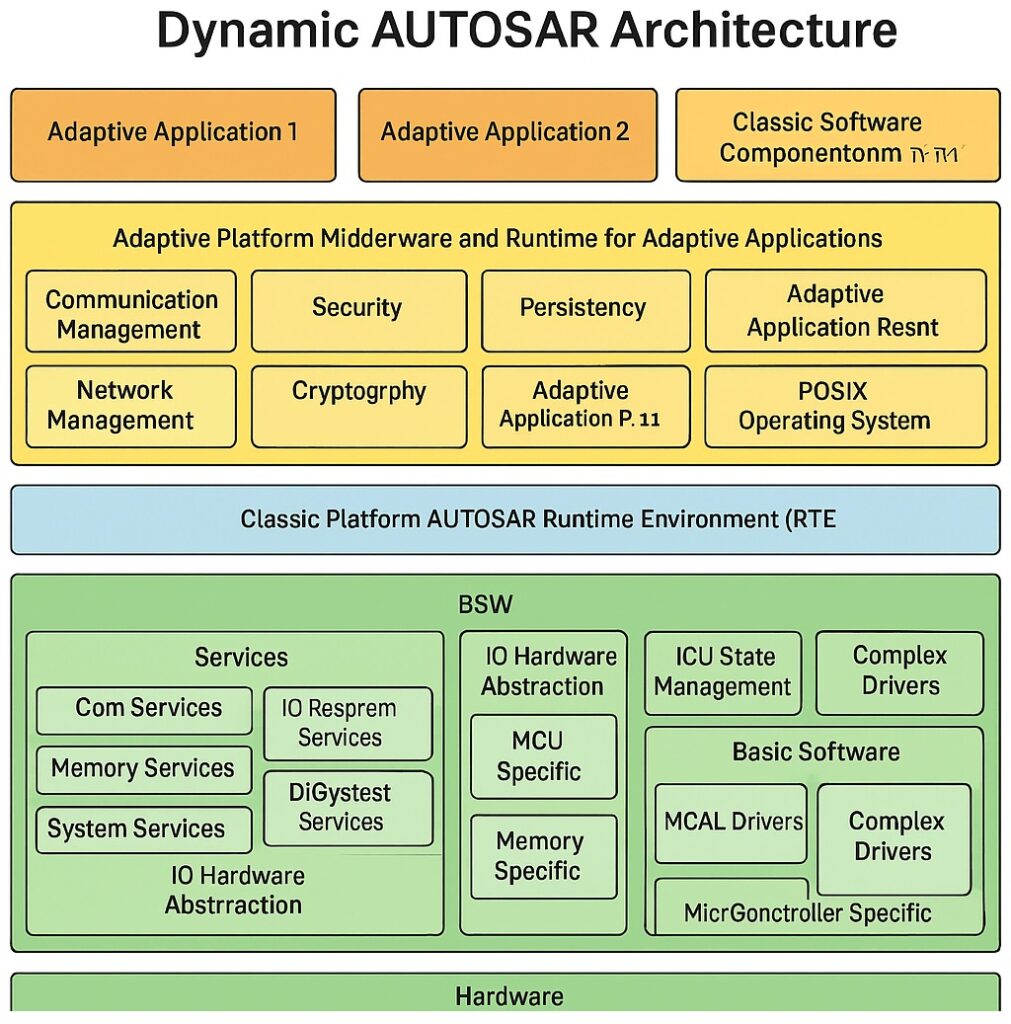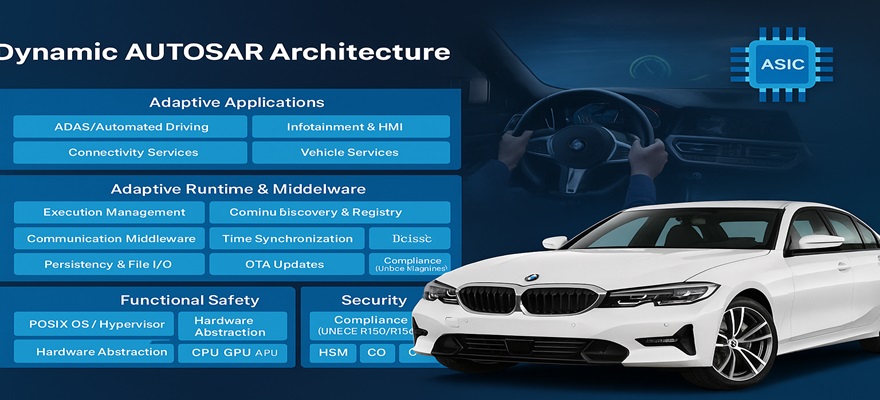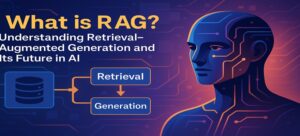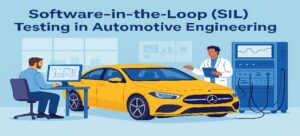- Salice Thomas
- Follow Me
- October 13, 2025
-
The future of mobility is no longer defined by mechanical horsepower, it’s powered by computational agility. As vehicles transform into rolling data centers, the need for flexible, adaptive, and continuously upgradable software architectures has never been greater. Enter Dynamic AUTOSAR, the next evolution of the automotive software stack.
Unlike its predecessor, Classic AUTOSAR, which was engineered for predictability and static control, Dynamic (Adaptive) AUTOSAR thrives in an environment of constant change. It empowers modern vehicles to adapt, auto update, and integrate new features like our smartphones while ensuring compliance with the strictest safety and cybersecurity standards. This dynamic framework is the cornerstone of the software-defined vehicle (SDV) revolution, enabling automakers to move from product centric models to platform driven ecosystems. From over-the-air updates and cloud connectivity to AI-driven driving intelligence, Dynamic AUTOSAR is bridging the gap between real time performance and scalable innovation.
From Classic to Dynamic AUTOSAR: The Shift from Control to Intelligence
For nearly two decades, Classic AUTOSAR has served as the backbone of automotive software engineering. It standardized how Electronic Control Units (ECUs) communicated, ensuring reliability, safety, and interoperability in millions of vehicles. This static architecture was perfectly suited for the traditional car
But as vehicles evolved into connected, autonomous, and electric platforms, this rigidity began to show its limits. Classic AUTOSAR’s fixed configurations and compile-time dependencies restricted innovation at runtime making it difficult for OEMs to deliver features “on demand.”
Enter Dynamic (Adaptive) AUTOSAR — the flexible, service-oriented evolution of its predecessor. Built atop POSIX-compliant operating systems and leveraging service oriented communication protocols like SOME/IP and DDS, it enables applications to be installed, updated, or replaced dynamically without rewriting the core ECU software.
The transition from Classic to Dynamic AUTOSAR represents far more than a technical shift. It’s the movement from a control-based system to an intelligence driven ecosystem where software defines the car’s personality, capability, and longevity. In this paradigm, the vehicle is no longer a closed system delivered once at the factory, but a living, upgradeable digital platform evolving over time.
Inside the Dynamic AUTOSAR Architecture
The Dynamic AUTOSAR (officially the Adaptive Platform) embraces modularity, service orientation, and continuous deployment, the three pillars of next generation automotive computing.
The Adaptive AUTOSAR stack is built on a POSIX-compliant operating system, ensuring compatibility with modern microprocessors and multi-core systems. This foundation enables true multitasking, memory protection, and dynamic reconfiguration capabilities essential for complex workloads such as ADAS, autonomous driving, and vehicle-to-everything (V2X) communication.

Above the OS layer sits the Execution Management Framework, which dynamically controls applications at runtime. This framework allows automotive software to be started, stopped, or updated on demand, bringing the agility of cloud-native systems into the car.
The communication backbone is service oriented leveraging protocols like SOME/IP, DDS, and ARA::COM to enable highspeed data exchange between ECUs, domain controllers, and cloud services. This is the nervous system of the modern vehicle, enabling data-driven decision making and predictive functionality.
Complementing this is middleware abstraction, which decouples hardware from software. It allows developers to design applications once and deploy them across different hardware platforms from edge controllers to centralized vehicle computers.
The result is faster innovation, lower integration cost, and a more scalable approach to feature development.
Dynamic AUTOSAR, in essence, is not just about adaptive software, but it’s about creating a living digital architecture capable of evolving in sync with the user, the cloud, and the world around the vehicle.
Real-Time Meets Flexibility: Challenges in Dynamic Environments
Dynamic AUTOSAR introduces one of the automotive industry’s greatest engineering paradoxes: how can a system be both flexible and deterministic at the same time?
Traditional ECUs built on Classic AUTOSAR operate with static schedules, ensuring predictable timing and behavior which is a necessity for functions like braking or airbag deployment, where even a millisecond delay can compromise safety. But in Dynamic AUTOSAR, applications can start, stop, or even update during vehicle operation. This creates a fundamental tension between realtime performance and runtime flexibility.
To resolve this, the Adaptive Platform leverages a POSIX real-time operating environment, memory partitioning, and time-triggered communication mechanisms that isolate safety-critical functions from dynamic applications. This means adaptive software can evolve, adding new features or services without disrupting the deterministic control of the vehicle’s safety layer.
Yet challenges remain. Dynamic memory allocation and resource scheduling require advanced runtime monitoring and health management. Integration with ASIL-D safety processes (as per ISO 26262) demands rigorous validation and redundancy. Cybersecurity adds another layer of complexity — with every new service endpoint or OTA update representing a potential attack surface. This convergence of flexibility and safety is where Dynamic AUTOSAR truly distinguishes itself. It doesn’t abandon the discipline of automotive-grade engineering; it redefines it for an era where vehicles are as much digital ecosystems as they are machines of motion.
Software-Defined Vehicles: The AUTOSAR Enabler
A decade ago, a vehicle’s value was determined by its hardware say engine displacement, drivetrain sophistication, or the precision of its mechanics. Today, that value is increasingly defined by software intelligence. Cars have become rolling computers, powered by millions of lines of code, edge processors, and constant data exchange with the cloud.
At the core of this revolution lies Dynamic AUTOSAR, the silent enabler of the Software Defined Vehicle (SDV). It provides the architectural flexibility automakers need to deliver software driven innovation from over-the-air (OTA) updates to on demand feature activation and AI-assisted driving. Through its service-oriented architecture, Dynamic AUTOSAR decouples hardware lifecycles from software development. This allows automakers to continuously enhance a vehicle’s performance and functionality long after it leaves the showroom — just as smartphones receive periodic updates to unlock new capabilities.
Integration with DevOps and CI/CD pipelines ensures that updates move seamlessly from the cloud to the car. This brings the agility of Silicon Valley into the traditionally rigid automotive domain enabling fast iterations, feature rollouts, and continuous improvement. The shift to SDVs is also redefining vehicle economics. Instead of one-time hardware sales, OEMs are building recurring revenue streams through subscription-based features, digital marketplaces, and cloud analytics. Dynamic AUTOSAR sits at the foundation of this transformation acting as the middleware that bridges real-time automotive safety with cloud-scale innovation.
As the lines between automotive engineering and software development blur, Dynamic AUTOSAR isn’t merely enabling connectivity; it’s establishing the nervous system of the software-defined vehicle, where every function can evolve dynamically, securely, and intelligently.
Industry Adoption: How OEMs and Tier-1s Are Embracing Dynamic AUTOSAR
The move toward Dynamic AUTOSAR isn’t a theoretical leap — it’s a visible transformation already reshaping the global automotive ecosystem. From Munich to Tokyo to Detroit, OEMs and Tier-1 suppliers are racing to integrate adaptive platforms into their next-generation electronic architectures. Leading this charge are BMW, Bosch, Continental, and Vector, each leveraging AUTOSAR’s Adaptive Platform to create modular, scalable, and service-oriented systems.
BMW has been among the earliest adopters, integrating Dynamic AUTOSAR within its ADAS and autonomous driving controllers, enabling real-time updates and function upgrades through its ConnectedDrive ecosystem.
Bosch, a founding member of the AUTOSAR consortium, is deploying adaptive middleware across its central vehicle controllers (CVCs) to consolidate dozens of ECUs into a handful of high-performance computing units.
Continental is focusing on Dynamic AUTOSAR’s service-oriented communication stack, enabling vehicles to interact seamlessly with cloud-based mobility platforms and third-party applications. For Tier-1 suppliers and software integrators, the appeal is clear: Dynamic AUTOSAR brings reusability, scalability, and interoperability, allowing them to deliver to multiple OEMs without rewriting core code. It also simplifies compliance with ISO 26262 and cybersecurity standards (ISO/SAE 21434) by providing standardized interfaces for diagnostics, updates, and security services.
The Dynamic Edge: Benefits Across the Vehicle Lifecycle
Dynamic AUTOSAR is at the core of this paradigm shift, empowering OEMs to extend the lifecycle value of a vehicle through continuous innovation, updates, and adaptability.
One of the most visible benefits is over-the-air (OTA) software updates. Rather than requiring service-center visits, new features, security patches, or performance optimizations can be deployed directly to the vehicle fleet. This not only reduces maintenance costs but also enables automakers to maintain long-term customer engagement transforming ownership into a digital relationship.
Dynamic AUTOSAR’s modular architecture allows for rapid feature introduction across vehicle variants. Engineers can build reusable software components and redeploy them across multiple ECUs or models, cutting development cycles by months. This modularity also accelerates certification and validation, as tested components can be integrated without requalification, ensuring compliance with ISO 26262 functional safety frameworks.
From a customer perspective, the benefits are even more tangible. Features like adaptive driver-assistance, personalized cockpit experiences, and predictive maintenance rely on dynamic service orchestration, a hallmark of Adaptive AUTOSAR’s runtime flexibility.
For OEMs, this capability unlocks new business models like subscription based features, on demand upgrades, and vehicle-as-a-service offerings , each powered by the ability to update software independently of hardware cycles.
In essence, Dynamic AUTOSAR enables vehicles to age gracefully, evolving with every update, learning from every journey, and improving with every connection to the cloud.
It turns the automobile from a static product into a living digital platform, where innovation doesn’t stop after purchase instead it accelerates.
Integrating Dynamic AUTOSAR with Functional Safety and Cybersecurity
Dynamic AUTOSAR addresses this dual challenge head-on by embedding safety and security by design within its adaptive framework. It extends the deterministic rigor of Classic AUTOSAR into the dynamic, service-oriented domain, creating an environment where flexibility coexists with control.
From a safety perspective, the Adaptive Platform aligns closely with ISO 26262, supporting ASIL-D applications through partitioned execution, time determinism, and robust error handling. Its architecture isolates safety-critical tasks from non-safety functions, ensuring that dynamic updates or runtime service changes never compromise critical control paths.
On the security front, Dynamic AUTOSAR implements end-to-end protection mechanisms — including Secure Boot, Secure Communication, Intrusion Detection Systems (IDS), and Credential Management. These are vital for defending vehicles against modern threats like unauthorized OTA updates, spoofed messages, or malicious ECU intrusions.
In addition, compliance with UNECE WP.29 R155 (Cybersecurity) and R156 (Software Updates) regulations is built into the adaptive stack. This means automakers can meet international mandates for secure software lifecycle management covering threat analysis, risk mitigation, and post-deployment monitoring.
The real breakthrough, however, lies in how Dynamic AUTOSAR bridges two worlds: the predictability of safety engineering and the agility of modern software. By combining formal safety validation with continuous update capability, it enables automakers to deliver safer, smarter, and more resilient mobility experiences even as vehicles become perpetual works in progress.
Future Outlook: Beyond AUTOSAR
As vehicles evolve into intelligent, connected ecosystems on wheels, Dynamic AUTOSAR represents both a milestone and a stepping stone. It has redefined how software is designed, deployed, and sustained within the automotive environment.
The next frontier lies in the convergence of adaptive platforms with full-scale Software-Defined Vehicle (SDV) operating systems. These will integrate Dynamic AUTOSAR, real-time operating systems (RTOS), and cloud-edge orchestration layers into a unified digital fabric.
The goal is to have seamless coordination between in-vehicle computing, cloud analytics, and AI-assisted decision-making — all operating in real time.
Emerging partnerships between OEMs, hyper scalers, and technology firms are already shaping this future. Volkswagen’s CARIAD platform, for example, combines adaptive middleware with cloud-native DevOps pipelines. Similarly, collaborations between Bosch, Microsoft, and AWS are enabling vehicles to function as part of a continuous learning ecosystem, where updates and AI models are deployed dynamically from the cloud.
As edge AI matures, Dynamic AUTOSAR will serve as the runtime layer that manages adaptive applications from predictive diagnostics to driver-behavior analytics across distributed vehicle networks. This adaptability will also drive the emergence of self-healing, self-optimizing vehicles, capable of identifying issues, applying patches, and recalibrating functions autonomously.
In this evolution, AUTOSAR’s role will transcend compliance, it will become a foundation for software excellence, interoperability, and trust.
The vehicles of tomorrow will not just move people, they will communicate, learn, and adapt, powered by architectures designed for continuous transformation. Dynamic AUTOSAR has already laid the groundwork for that reality, the nervous system of the intelligent mobility era. What comes next will redefine not only the automobile, but the very concept of innovation on the move.
Conclusion: Engineering Agility Into the Future of Mobility
Dynamic AUTOSAR is more than a software framework; it’s a philosophy of continuous evolution. It represents a fundamental rethinking of how intelligence, safety, and connectivity coexist inside a moving ecosystem. By enabling vehicles to learn, update, and scale dynamically, it transforms the automobile into a living digital organism, one that improves with every line of code and every mile driven.
For engineers, it’s a new frontier of design freedom. For OEMs, it’s the foundation of sustainable competitiveness. And for drivers, it’s the beginning of an era where cars don’t just take us places, they grow with us.
In the shift from mechanical precision to digital intelligence, Dynamic AUTOSAR stands as the engineering bridge between the present and the possibilities ahead, driving not just smarter vehicles, but a smarter mobility future.




